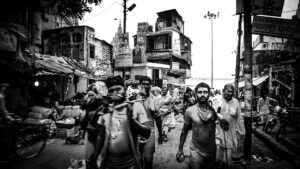Gopalganj Housing Model
Introduction:
Bangladesh is signatory to a number of international resolutions that protect the rights of slum dwellers. One such resolution for Gopalganj, the Global Strategy for Shelter to the Year 2000, stipulates that all States have a fundamental obligation to protect and improve houses and neighbourhoods, rather than damage or destroy them. The National Housing Policy 1993 affirms the right to habitation and housing for all and compels the Government to take steps to avoid forcible relocations or displacement of slum dwellers.
Slum settlements:
Slum settlements are the visible face of urban poverty in Bangladesh. In the absence of public and private sector initiatives to provide affordable and secure housing for the urban poor as well as commercial bank loans to stimulate affordable housing enterprises, slum living has become an unavoidable reality and so has the threat of eviction. Lack of security of land tenure remains a major constraint on poverty reduction. Access to land is an inseparable ingredient in a poor household’s ability to survive, earn, thrive and lift itself out of poverty.
Aside from being a basis for shelter and access to services, secure land rights can act as a safety net in times of hardship and provide financial security. Secure tenure and housing also encourages people to invest in improved housing and the land itself, while attracting public and private investment in the community as well as other services and infrastructure.
Gopalganj Eviction:
South Molavi Para Community Development Committee (CDC) was formed in February 2001 and most of the 1,935 people in its 387 households had lived on the site for more than 35 years.
Shocked, angry and desperate, the residents of South Molavi Para CDC scraped together whatever meagre possessions they could find and went in search of a new place to call home. Some families went back to the villages they had migrated from to call on relatives to house them, while other families moved to different slums in Gopalganj to start again. Some families stayed amongst the ruins of their former homes, salvaging whatever materials had not been destroyed to set up flimsy shelters.
Evictions and Human Development:
Slum evictions bring to light many urban paradoxes. Despite an acute housing shortage in Bangladesh it is estimated that demand exceeds supply by over six million housing units. Meanwhile with a declining trend in house ownership in urban areas, slums are being demolished without the provision of alternative shelter for their inhabitants. The reality is that forced eviction without relocation simply shifts poor people from one slum to another or leads to the development of more slums, depleting valuable housing stock and land. Despite slum evictions, the number of slums continues to increase.
Policy Affordable Housing:
Replication of Gopalganj Mandartola Housing Resettlement Project:
UPPR turned an adverse situation into an opportunity and led the way towards a sustainable solution to housing needs. At the local level, UPPR’s mobilization efforts resulted in slum communities assisting their evicted neighbours and slum leaders successfully lobbying the local authorities to provide rapid, short and long-term relief. UPPR’s response at a higher level resulted in local and central Government decision makers taking steps towards providing land and low-cost housing to the evicted community and to improve infrastructure and social services in Gopalganj slums.

Conclusion:
Gopalganj eviction has shown that when mobilized, represented and empowered, slum communities in Bangladesh can influence the decisions that affect them, and in doing so, sustainably improve their own lives and livelihoods. The Gopalganj Housing Project is also an exemplar intervention showing great potential and may determine the future direction of affordable housing for the poor in Bangladesh.
